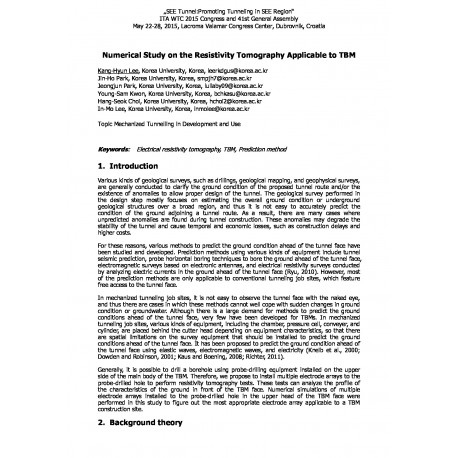Cart
0
0
No document
0,00 €
Total
Document successfully added to your shopping cart
Quantity
Total
There are 0 items in your cart.
There is 1 item in your cart.
Total documents
Total shipping
To be determined
Total
Search & filter
Search for a publication
Search & filter
Viewed documents
Numerical Study on the Resistivity Tomography Applicable to TBM
wtc2015_full_lee_2
J. Park / J. Park / K.-H. Lee / I.-M. Lee / J.-H. Park / Y.-S. Kwon / H.-S. Choi
Various kinds of geological surveys, such as drillings, geological mapping, and geophysical surveys, are generally conducted to clarify the ground condition of the proposed tunnel route and/or the existence of anomalies to allow proper design of the tunnel. The geological survey performed in the design step mostly focuses on estimating the overall ground condition or underground geological structures over a broad region, and thus it is not easy to accurately predict the condition of the ground adjoining a tunnel route. As a result, there are many cases where unpredicted anomalies are found during tunnel construction. These anomalies may degrade the stability of the tunnel and cause temporal and economic losses, such as construction delays and higher costs. For these reasons, various methods to predict the ground condition ahead of the tunnel face have been studied and developed. Prediction methods using various kinds of equipment include tunnel seismic prediction, probe horizontal boring techniques to bore the ground ahead of the tunnel face, electromagnetic surveys based on electronic antennas, and electrical resistivity surveys conducted by analyzing electric currents in the ground ahead of the tunnel face (Ryu, 2010). However, most of the prediction methods are only applicable to conventional tunneling job sites, which feature free access to the tunnel face.




